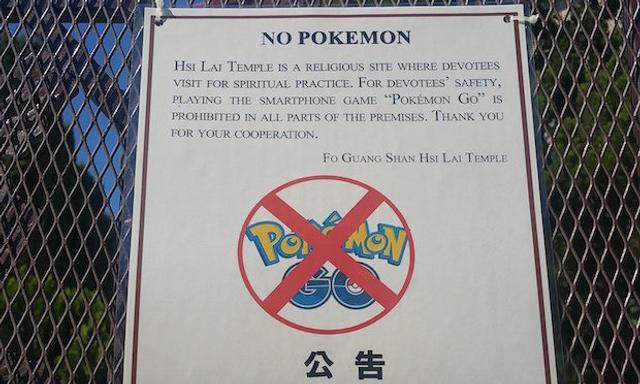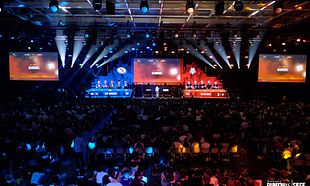It's hard to honestly quantify just how much of a pop culture sensation Pokemon was when it first launched twenty years ago.
The same can be said for the launch of Pokemon GO, the gaming app developed by a small studio that spun out from Google in 2015. The idea came from Google's so-called Ideas Man, John Hanke. His gaming credentials and reputation were undoubtedly solid. Hanke helped to start up one of the world's first MMORPG (Massively Multiplayer Online Role-Playing Games) games with two other developers. The game, known as Meridian 59, was set in a typical sword and fantasy world, but what it made it stood out was the fact that players largely governed themselves and ordered justice to those who either fell outside of the game's parameters or attempted to upset the balance. The game beats its rival, Ultima Online, to market by a whole year and launched in 1996.
In 2001, Hanke set up Keyhole Inc., which developed geospatial data and visualisations and was used by news organisations during the Iraq War for roving reports. By 2004, the company was bought by Google Inc. and Hanke was brought into the fold. Pretty soon, he transformed the company into Google's Geo division and spearheaded Google Maps, Google Earth and negotiated a deal with Apple to include Google Maps on the iPhone. Before long, StreetView began and Hanke was given resources by Google to set up a gaming division known internally as Niantic Labs.
Hanke quickly got to work on making a game that mixed both his gaming background and his work with geo-data. Thus, Ingress was born in 2013 and shares a huge amount of commonality with Pokemon GO. By 2015, the game had over 7,000,000 players. Niantic Labs then spun out from Google and, in order to raise capital for its growth, partnered with Nintendo and the Pokemon Company to create an app with a similar build to Ingress.
Nintendo was changing and needed to grow with the times. Its days as the console leader were long behind them and flagging stock prices meant that Nintendo had to evolve or die. By bringing on mobile gaming, the 127-year old company was finally moving with the times. Tsunekazu Ishihara, one of the leaders of the Pokemon Company, was a fan of Ingress and helped to develop a sort of April Fool's joke that became the basis of Pokemon GO. A fake advert was made that more or less covered the basic principles of the game. The advert amassed - as of writing - 19,541,377 views.
On July 6th, Niantic Labs released Pokemon GO to the Australian, New Zealand and the U.S. markets. The demand was such that server outages and technical glitches were commonplace. Workarounds became popular with players finding ways to cheat their mobile devices into appearing in countries where the game was available. Hell, we even published a how-to guide on the thing. It was crazy. Nintendo's stock price soared to a high of €215 per share. It was the fastest app to reach the top of Apple's App Store. By July 15th, 1.3 million phones in Holland had installed the game - even though it wasn't officially released there. In just over a month - 33 days, to be exact - the game has surpassed over 100,000,000 downloads on Google Play alone. Pokemon GO was here to stay.
Until it wasn't.
First, there was the endless server outages that plagued the early adopters of the game. While this might have been a happy problem for Niantic Labs, it became off-putting for players whose attention span - especially when it came to gaming - was particularly small. Once these issues were covered, then came the GPS-spoofers. Essentially, spoofing in Pokemon GO puts a player in a location they're not actually at. Remember Ingress, the game Niantic Labs made first? The studio used all its location data from that as a base for Pokemon GO. Players knew where PokeStops and PokeGyms were and had the ability to trick their phone into thinking they were at that specific location. Players could take over a gym with little or no issue, either because Pokemon GO hadn't fully launched in that country or because they had much stronger Pokemon at their arsenal.
Next came the drudgery of stomping around areas, trying to find Pokemon. Players, particularly in Dublin, reported that the same types of Pokemon - Drowzees, most usually - were exceptionally common. You couldn't walk from one end of a street to another without seeing one. So how did players combat this? Tracking services like PokeVision. These managed to locate exactly where Pokemon were and how long they were there. They lasted about a month before Niantic Labs shut them down.
After that came the harsh reality that there wasn't much of an endgame with Pokemon GO. While some players might argue that a MMORPG - if you can call Pokemon GO that - doesn't need one. After all, it's meant to be an endless game and perfection through amassing stats is the goal. Filling out the Pokedex, sure, but since PokeVision and other trackers were shut down, the reality of catching Mewtwo or Charizard next to the Black Lion in Inchicore was highly unlikely.
Finally came the fact that the game itself wasn't really all that interesting. Playing Pokemon GO fully was a grind. You had to walk to incubate eggs. You had to hang out in the cold in order to beat a gym and the fighting system itself was completely not up to scratch. Moreover, randomisation or luck played a huge part in it. Top this all off with the fact that the app drained batteries and, before long, Pokemon GO's sheen began to fade with players. By the end of August, the game lost close to 15,000,000 players in the space of a single month. By October, close to ten updates had altered some aspects of the game and tweaked them, but the reality is that the game is now only played by hardcore fans. More to the point, the learning curve for entering the game now is so steep that players now have no way to win a gym or reach past Level 20.
It's hard to point to one specific reason why Pokemon GO's popularity has cratered out.
It might just be because the game doesn't lend itself to repeated playing. It could be Niantic's obstinance to trackers and zero-tolerance approach to cheaters. More likely, however, is the fact that mobile gaming has a serious issue with player retention. 40% of players return after a single session in a free-to-play game. Nobody really knows why that is; it could be just down to the fact that the player doesn't exchange money for the game and values it less than something they paid for. Yet, Pokemon GO has a huge range of in-app purchases and earned - at its height, anyway - $10 million daily from Android and iOS users. That figure's probably gone down now.
Either way, one thing is for sure - Pokemon GO is no longer the pop culture sensation it once was. Its brief time in the spotlight was fascinating to watch, even from an outsider's perspective, but that time is long gone.









































































